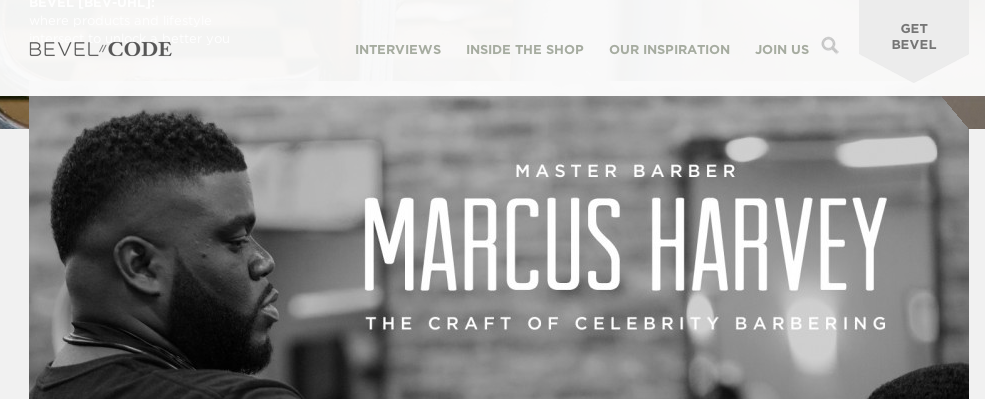I’ve been privileged to work with brands from all over the world in the last few years. Through this work, I’ve also had a chance to meet, become friends with, work with and collaborate with some of the best content marketers in the world. Some of these marketers have their faces plastered in magazines while others keep it low key and aren’t anything close to household names.
When I first started my career, I made it my mission to learn from the best. I studied and read books from the advertising greats and consumed every blog post I could fine from the top modern day marketers I could fine. Through discussions, research and studying the craft, I’ve been able to identify and uncover a few common traits that are found in the best content marketers today. If you want to be a great content marketer, you need to know what it takes to be considered such. Here’s a few traits that differentiate the best content marketers from the rest:
Embraces A Foundation of Storytelling
Would you rather me tell you why my product is great or explain how my product can help you? For most people, they would quickly see the value in learning how a product can help them and ask for that. Yet most businesses still believe in talking about their features and completely ignoring the benefits.
I’ve made this mistake in the past and I’m sure you have as well. It’s an easy trap to fall into but one that the best marketers have learned to resist and avoid like the plague. The ability to tell an effective and compelling story is something that comes from a combination of practice and study. It comes from our ability to understand the interests and motivations of our audience and combine them with a story so compelling that they have no choice but to read and share.
One company that is great at injecting storytelling into their content is the marketing giant RedBull. No matter what you think of their product, it would be ridiculous to suggest that this is a company that doesn’t get it. From their ability to create events that share a story of living life to the fullest or pushing the boundaries of marketing by having a man parachute to the earth from space; Redbull has developed one of the most powerful brands with storytelling.
Redbull is estimated to spend more than 1 billion dollars in advertising and marketing every year. As such, it might be challenging to see a link between their situation and your own. But let me introduce you to a company called Bevel that recently launched and has leveraged storytelling to rise as an industry. Bevel is the first and only end-to-end shaving system designed for men and women with coarse or curly hair.
The company launched a website called BevelCode a site that collects stories highlighting everything from the ways young men of color have forged grooming habits to Bevel specific grooming tips & inspiration. Whether it’s a blog post highlighting 5 Tips to Keep Your Hands Healthy and Ageless or an exclusive interview with Hip Hop legend Nas, the folks behind Bevel understand the power of storytelling.
Willingness To Challenge “Best Practice”
Online dating has only recently began to shake the stigma around finding love on the internet. Rewind a few years ago and online dating was considered by many to be taboo and often regarded as a last chance for romance.
Today, through a combination of societal change and great marketing by online dating sites across the world, the world of online dating has grown into a multibillion dollar industry.
Back in 2009, OkCupid launched their blog OkTrends, a collection of insights and information surrounding the behaviours of their millions of users.
You see, while most online dating websites were creating content about Five Things To Say On The First Date or Six Date Ideas For The Awkward Introvert; the team behind OkTrends were breaking the rules. They were tackling topics that no one would touch and did it with perfection.
Here’s a quick snapshot of one of the blog posts they published titled: Why You Should Never Pay For Online Dating. The blog post was specifically taking a shot at their future acquirer, Match.com and competitor eHarmony who OkCupid believed was deceiving their users when discussing their userbase:
But this wasn’t their only blog post that went against the norm and drove both traffic and earned media.
OkCupid covered topics that most online dating websites were afraid to touch and embraced the idea of tackling the conversations that were off limits. Whether it was trends in the differences between what gay people are interested in vs. straight people or the difference between the types of messages white people recieve vs. black people; the OkTrend team tackled every and any topic.
Beyond insight and entertainment, these blog posts were also valuable.
The content they crafted and studies they conducted provided insights that helped solve problems that their users were having. If you can solve a problem for your target audience, they will associate your brand as being one that cares about their problems and worked hard to help solve them.
OkCupid helped people by showing them “How Not To Be Ugly By Accident” through research that uncovered what cameras took the most attractive photos and revealed that using a flash in your pictures added an extra 7 years to your appearance.
Understands The Role Of Technology
You might find this hard to believe but I swear I overheard two marketers talking about the power of QR codes in Starbucks the other day. I kid you not. The two guys sat there and discussed how great QR codes were and how they made life easier for their audience. In fact, they concluded that QR codes were so convenient and unique that their next batch of business cards would have nothing but a QR code on them…
Some marketers simply don’t understand the role of technology in their industry. Technology is a tool for marketers to leverage to influence perceptions and behaviours. It’s not something that should be simply added to a marketing or sales tool because it’s shiny or new. It’s these folks who put QR codes on billboards that can only be seen by someone driving 100MPH on the highway. It doesn’t make any sense (unless you’re trying to kill your potential customers – Great idea for a funeral home).
The best content marketers look at technology in a similar lens as a blog post, infographic or slideshare presentation. Instead of simply looking at technology as a shiny feature, they look at technology as an asset they can leverage to drive results. For example, companies like HubSpot have made a habit for launching technology based apps that drive a significant amount of qualified and engaged leads. One application they launched was the Blog Topic Generator, an application that allows content writers & marketers (their target audience) to receive blog post titles as inspiration based on a few keywords. To receive the titles, the users are met with a form asking for all the information they need to reach out and start the sales process. Check it out:
Once a user fills out this form, they are officially in the sales pipeline for Hubspot. This isn’t the only tool that Hubspot has created and used to drive results. In the early days, they launched Marketing Grader (formerly known as Website Grader), a site that allowed users to plug in their domain to recieve information like site speed, page titles and other insights valuable for an SEO. This application has been used to analyze more than 3 million sites since launch.
SEMrush is another website generating millions of monthly visitors by offering a free competitor analysis tool. Another example can be found with the folks at Moz.com and their Open Site Explorer application or Neil Patels’ QuickSprout app. Each of these apps have generated significant ROI for their respective owners and companies. But it doesn’t only exist in the marketing industry. Look no further than sites like Baby.com or Bodybuilding.com to see other examples where the technology is a part of the content and the content drives both new visits and loyal customers.
Willingness To Hustle For Distribution
So many marketers make the mistake of claiming that content is king. In reality, you can create an awesome infographic but if it doesn’t reach your audience it was for nothing. Content isn’t king. Distribution is. Content is important but distribution is what will drive real results.
It’s your distribution channels that will help your content reach a larger and more relevant audience. It’s your distribution channels that will help you reach the audience that is most likely to buy and share your story. It’s not enough to believe that if you build it, they will come. You need to know as a marketer that you’re going to have to hustle and work to land your content in front of the right people. Once it’s there, your content exists. Once it’s there, your content can be validated as being something people want or ignore.
The next time you publish your next great piece of content, spend double the amount of time you took writing it to promote it. Consider the many distribution channels that exist and put in the time before you write the content to research and understand the best channels to distribute it. Maybe the best channels to distribute your content is through an influencer? Maybe it’s through a forum? Or maybe it’s through a guest blog post?
Do the research. Hustle for distribution. Drive results.
D.R.E.A.M = Distribution Rules Everything Around Me.
Conclusion
If anything should be obvious to you from this post, it should be the fact that the best marketers are those who stay up with trends and leverage them when appropriate. The best marketers are also those who don’t sit back on their past successes with the hope that they’ll continue to be successful in the future without taking action. The best marketers embrace the hustle. Understand the role of technology. Challenge the status quo and embrace storytelling.
What else do you think makes up the DNA of the worlds best content marketers?
If you want to become one of the best, a great place to start is Stand Out: The Content Marketing Guide for Entrepreneurs. Download it today and learn everything you should know about tools and technologies including but not limited to Slideshare, Facebook and Twitter.




